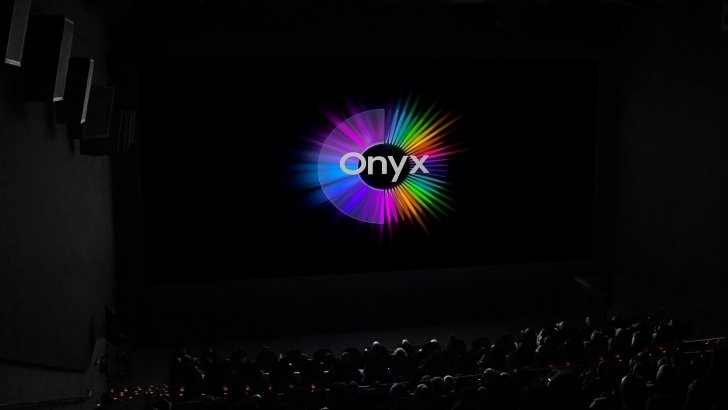Joongshik Wang mentioned that organisations able to identify revenue-generating opportunities in the new economy will gain a competitive edge
Joongshik Wang is EY Asean Technology, Media & Entertainment and Telecommunications Leader as well as EY-Parthenon Asean Leader. He has extensive experience as a strategy and M&A consultant in Southeast Asia, China, and South Korea.
He serves a wide variety of clients within the technologies, digital media, and telecom industries; his experience with corporate clients spans corporate strategy, M&A, portfolio optimisation, innovation, and digital customer experience.
At the same time, Joongshik is well-known as a trusted commercial tech advisor to private equity firms and large corporations through his strategy and M&A engagements with emerging Southeast Asian e-commerce, sharing economy, and technology unicorn clients.
He holds an MBA from the University of Chicago Booth School of Business and a Master’s in Economics and Applied Statistics from Yonsei University in South Korea.
Commenting on the current state of the telecom industry, he acknowledged that previous efforts around digital transformation were mostly focused on the front office, where companies leveraged technology to provide better products and services to customers.
However, he noted that beyond providing connectivity, increasingly, telcos are expected to ensure security and act as the systems integrator that will work with partners to deliver end-to-end solutions.
“Telcos have experienced broader demand for services and the need for high-speed, reliable, secure connectivity and cloud solutions have soared,” said Joongshik.
Speaking with Asian Telecom, the EY partner discussed trends and challenges in today’s telecom industry, best practices to thrive in today’s market, and the state of the industry when it comes to its digital transformation journey.
Given your vast career, what experiences or people impacted the career that shaped you into the industry leader you are today?
When I started my strategy consulting career, I had many opportunities to work with telecommunications companies (telcos) in Asia. I was given exposure to leading telcos where the status quo was continuously being challenged, requiring them to adapt by developing deep expertise and innovation.
In addition, working on unicorn-related opportunities gave me valuable lessons on what to expect and how to adapt to the evolving tech landscape.
What trends in the telecom industry have interested you lately? What are the emerging technologies that currently redefine the telecom industry?
Today, the boundaries between the technology, media, and telecommunication (TMT) sectors are converging. For example, alongside technology companies and online game developers, telcos can leverage emerging technologies such as 5G, edge cloud, analytics and artificial intelligence (AI) so that they are no longer relegated to the role of pipe provider but are paving the way to becoming cocreators of the metaverse. Similarly, telcos are moving beyond connectivity to provide premium media content. Indeed, we are already starting to see telcos around the world recognising this potential, and many of them are moving beyond being the “pipes” to provide a more comprehensive scope of service.
At the same time, with the current disruptive landscape, it is important that telcos look at a future-back approach to optimise today’s success and plan for challenges ahead.
Organisations with the ability to identify new revenue-generating opportunities in the new economy, particularly in innovative services for business-to-business enterprises, will also gain a competitive edge. As well, whilst telcos are tapping into AI and emerging technologies to optimise operations and services, edge computing is also gaining momentum to reduce latency.
As an industry leader, what do you think are the best practices that the TMT industry and businesses can adopt to thrive in today’s competitive market?
We have learnt several good lessons over the past two decades. From the dot-com bubble of 2000 and the rise of the platform economy in the 2010s, we have seen how companies – especially legacy companies – are being disrupted and losing market share to new players. Even in the past two years during the pandemic, companies have had to deal with a sudden need to change business norms due to safe distancing measures. Hence, it is important that companies continue to innovate, transform, and seek to stay agile and move quickly in the face of disruptions – whether they come in the form of new players, products, and services or a pandemic.
What areas in the TMT industry are in need of digital transformation? How can organisations ride the digital trend without losing their connection with consumers?
Previously, efforts around digital transformation for telco players were mostly focused on the front office, where companies leveraged technology to provide better products and services to customers.
During the pandemic, companies moved to conduct their business digitally. As a result, telcos have experienced broader demand for services. The need for high-speed, reliable, secure connectivity and cloud solutions have soared.
However, more than just being able to provide connectivity, telcos are also expected to provide security and act as the systems integrator that will work with partners to deliver end-to-end solutions, over both fixed and mobile networks.
Whilst these positive changes are happening, the investment required to adapt and expand the networks – including the full rollout of 5G – means the percentage of revenue being invested continues to increase. There is now a critical need to ensure that these investments are made precisely and lead to the strongest returns. Hence, organisations need to consider how they allocate capital, how they plan, deploy and run a resilient network with quality, at low cost, and how they drive strong returns.
Moving forward, efforts should also be focused across all areas including backend systems and the middle office.
What challenges do the technology, media and entertainment, and telecommunications (TMT) industries face today? How will they overcome these challenges?
The main challenges that TMT companies face today are the speed of disruption, unclear applications for 5G and increasing pressure on environmental, social and governance (ESG) requirements by regulators and industry watchers.
Companies today – including those in TMT sectors – are facing disruptions from many fronts. TMT companies, in particular, need to match the agility of their operations by simplifying the organisation, streamlining business processes, and leveraging cloud capabilities, data analytics, and automation tools to maintain a competitive edge.
With 5G looking to be the focus and be integrated into companies’ business processes over the coming years, TMT companies need to prepare use cases and adoption roadmaps to stay ahead.
With the increased scrutiny from consumers and regulators, there is also rising pressure for telcos to steer their focus on ESG. Specifically, telcos will increasingly be expected to provide more sustainable products and services as well as green targets for their emissions and business. For this, telcos need to drive their ESG commitments supported by top-down organisational changes, transparency and reporting on relevant KPIs.
As a judge in the Asian Telecom Awards, what are you looking forward to in this year’s entries?
This year, I’m looking out for companies that display a focus on agility, innovation and ESG commitment.


![[Video] Unfolding What’s Next: Unboxing Galaxy Z TriFold](https://stuffmotion.com/wp-content/uploads/2025/12/Samsung-Mobile-Galaxy-Z-TriFold-Unboxing-Video_thumb932-218x150.jpg)
![[User Guide] Galaxy Watch8 Series: Running Coach for Every Distance, From 5K to Half Marathon](https://stuffmotion.com/wp-content/uploads/2025/12/Samsung-Mobile-Galaxy-Watch8-series-Running-Coach-HealthyNarae_Thumb728F-218x150.jpg)

![[Video] Crafting Perfection: The Making of Galaxy Z TriFold](https://stuffmotion.com/wp-content/uploads/2025/12/Samsung-Mobile-Galaxy-Z-TriFold-The-Making-of-Galaxy-Z-TriFold-Video_Thumb932-1-e1764645640283-218x150.jpg)
![[Design Story] One UI Helps You Live Life Your Way](https://stuffmotion.com/wp-content/uploads/2025/12/Samsung-Corporate-Design-One-UI-Design-Story_Thumb1000_F-e1764558951224-218x150.jpg)














![[Video] Samsung QLED TV Teardown Reveals Technology That Proves ‘Real’ Value](https://stuffmotion.com/wp-content/uploads/2025/11/Thumbnail-218x150.jpg)













![[Video] Crafting Perfection: The Making of Galaxy Z TriFold](https://stuffmotion.com/wp-content/uploads/2025/12/Samsung-Mobile-Galaxy-Z-TriFold-The-Making-of-Galaxy-Z-TriFold-Video_Thumb932-1-e1764645640283.jpg)
![[Design Story] One UI Helps You Live Life Your Way](https://stuffmotion.com/wp-content/uploads/2025/12/Samsung-Corporate-Design-One-UI-Design-Story_Thumb1000_F-e1764558951224.jpg)
![[User Guide] Galaxy Watch8 Series: Running Coach for Every Distance, From 5K to Half Marathon](https://stuffmotion.com/wp-content/uploads/2025/12/Samsung-Mobile-Galaxy-Watch8-series-Running-Coach-HealthyNarae_Thumb728F.jpg)


![[Galaxy Unpacked 2023] The A to Z of Galaxy Unpacked 2023: Unveiling the Latest Era of Samsung Galaxy Innovation](https://stuffmotion.com/wp-content/uploads/2023/02/123131.png)